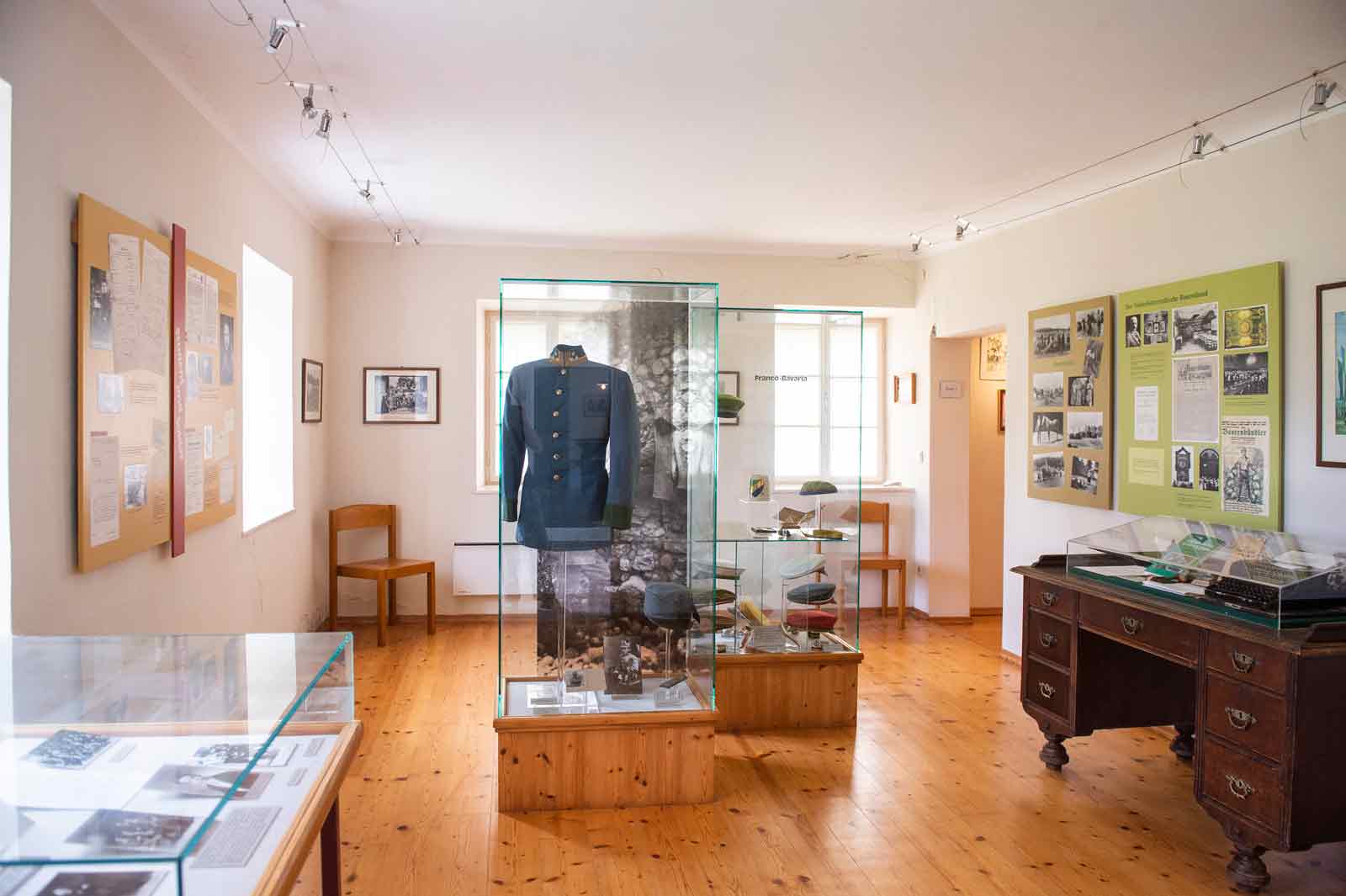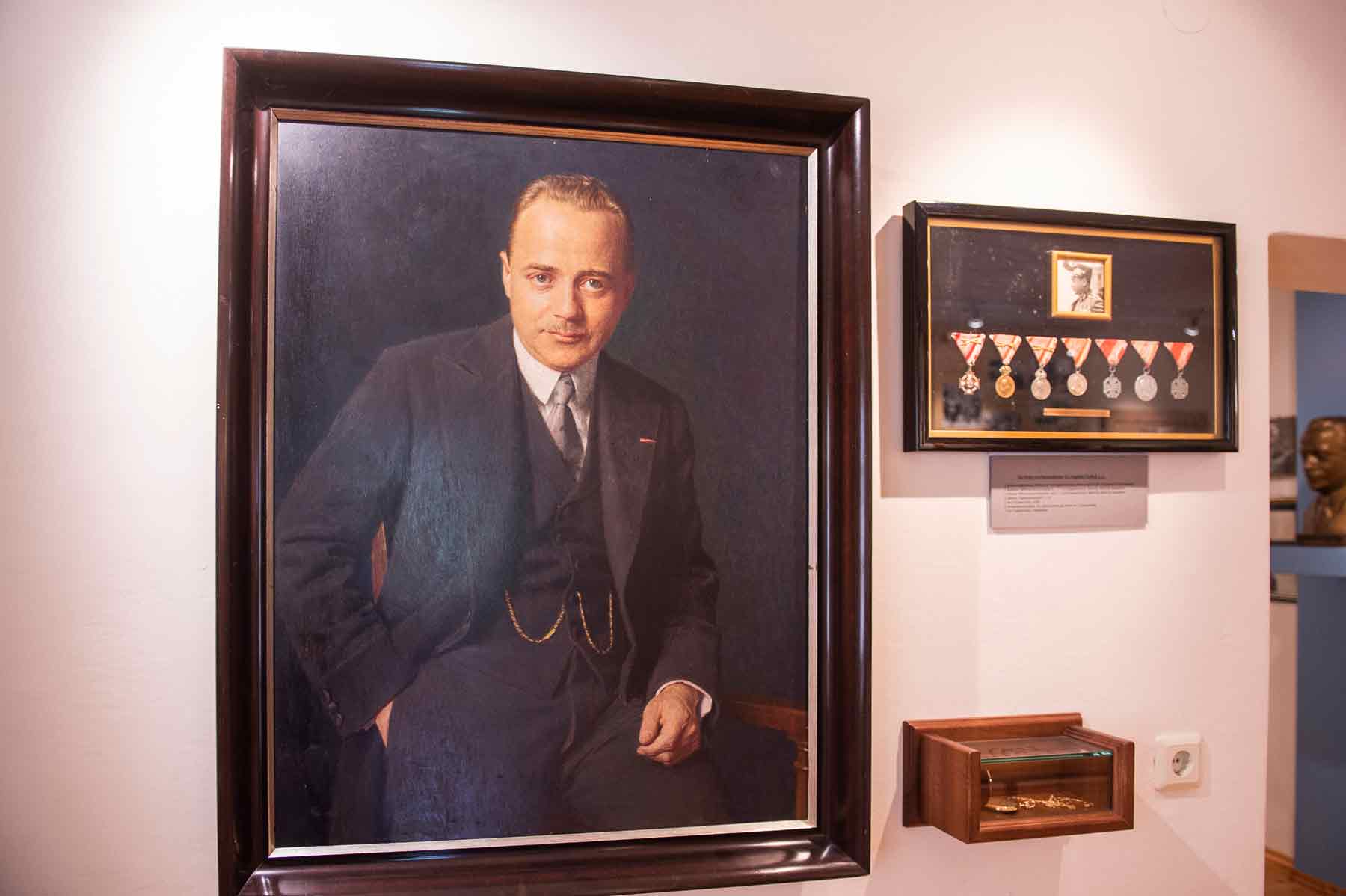In recent years, people around the world have wrestled with an important question: how should modern-day societies that prize values such as equality and freedom handle public symbols of colonialism, oppression and racism?
Statues of problematic historical figures have been toppled or removed; European museums have begun to acknowledge (or in some cases return) the art they stole from other countries during the colonial period; and cities have named, either permanently or temporarily, streets and squares in honour of people who fought against colonialism, racism or other forms of repression. Berlin, for example, now has a Manga Bell Platz, named after Rudolf and Emily Duala Manga Bell, a king and queen in Cameroon who fought German colonialism.
More recently, in October, a group of curators proposed a unique solution for dealing with a controversial museum in Texingtal: conscious dismantling. The small town in Lower Austria was the birthplace of Engelbert Dollfuss, chancellor of Austria between 1932 and 1934 whose regime has been described as a “Kanzlerdiktatur” (chancellor’s dictatorship).
The museum is in the house where Dollfuss was born and the curators, Remigio Gazzari, Christian Rabl and Johanna Zechner, are part of an organisation called MERKwürdig, which runs events and educational activities dedicated to commemorating the victims of the Melk concentration camp, as well as shining a light on other local historical issues such as the experiences of the former Jewish population in the region.
The group has proposed that, over the next five years, they will take apart the museum piece by piece, distributing its components to historical or educational institutions and archives, such as the House of Austrian History and the Lower Austria State archives. Along the way, they plan to engage the public in this process by hosting workshops, temporary exhibitions, film evenings and discussion roundtables.
This gives us a chance to deal with problematic remnants of history in a productive way
“We want to take the objects, work with them, analyse them, ask what they tell us about history, about our past and present, and then remove them,” says Gazzari. “This gives us a chance to really deal with problematic remnants of history in a productive way.”
During his short reign as Austria’s chancellor, Dollfuss banned protests and opposition parties, censored the press, and declared himself as the foreign minister, minister of agriculture, minister of defence and minister of public security. Dollfuss modelled himself on the Italian dictator Benito Mussolini and The New York Times of the day described his government as a “rival dictatorship” to that of Hitler.
But in 1934, after Dollfuss was assassinated by Nazis, he was “heralded as the ‘hero chancellor’ and as a ‘martyr’ who had ‘sacrificed’ himself for Austria”, according to information gathered by the House of Austrian History, which goes on to say: “A lottery was set up to collect funds for a large monument, and portraits and memorabilia of Dollfuss were sold. Many embraced this state-organised cult around Dollfuss.”
 MERKwürdig will distribute the museum pieces to institutions and archives. Photo by Daniela Matejschek
MERKwürdig will distribute the museum pieces to institutions and archives. Photo by Daniela Matejschek
After the death of Dollfuss, the house where he was born became a centre of pilgrimage, Gazzari explains. “The fascist regime lost its führer,” he says. “They needed a figure who had fought and died, and now leads from the beyond.”
In the 1990s, when members of the Dollfuss family decided to demolish the house where Dollfuss was born (for practical reasons), they sparked a movement within the Texingtal community to save the house, according to Gazzari. The current museum opened in 1998 with financial support from the cultural department of Lower Austria, the Lower Austrian Farmers' Association and the Federal Ministry of Education and Culture, according to the MERKwürdig curators. Though the building where the museum is housed is owned by the Dollfuss family, the museum was overseen by members of the town council, and profits from the entrance fee went into the town budget, Gazzari explains.
Rabl adds that “nobody outside of the region even noticed the museum until December 2021”. That was when the former mayor of Texingtal, Gerhard Karner, gained national prominence as Austria’s new Minister of the Interior. Once journalists established that Karner was in charge of a museum honouring a dictator, several people, including Ewa Ernst-Dziedzic, a member of the Austrian parliament for the Greens, and Sabine Schatz of the Social Democratic Party, called on him to clarify his stance on ‘Austrofascism’ and distance himself from Dollfuss.
“The museum is run by the town, the mayor is the proprietor of the museum, and this is what we saw as problematic,” Gazzari says of himself and the other two curators. “A democratic institution is running the museum. This doesn’t work.”
In response, Karner engaged MERKwürdig to find a solution. The group of curators considered the options. The museum was not an appropriate place for the stories of the victims of fascism to be told, they decided. And leaving the house as a memorial, even a critical one, would be too celebratory. With a house that is someone’s birthplace, Gazzari asks: “How can you tell any other story than this is where our leader saw the light of day, this is where he took his first breath?”
Eventually, they decided the museum should cease to exist. But they realised that in shutting the museum down, there was an opportunity to educate people.
Gazzari argues that one of the central lessons people should take away from studying Europe in the 1930s is how quickly democracy can be dismantled. “We fought for democratic rights, for voting rights, for a society where everybody can take part, and we can lose that again, very easily and very quickly, and that’s something everybody should know at all times.”
Dollfuss is a good example of how swiftly a powerful political figure can make changes, Rabl says. “Occupying the parliament, changing the constitution, undermining the media, bringing back the death sentence,” he adds. “This was done in a few months.”
 Portrait of Engelbert Dollfuss. Photo by Daniela Matejschek
Portrait of Engelbert Dollfuss. Photo by Daniela Matejschek
The idea of consciously dismantling the museum was rooted in recent work by different organisations to decolonise public spaces, Gazzari says. The options the curatorial team considered echo the debates around other controversial historical objects: should statues be removed? Should street names be changed? Should memorials be contextualised? Should stolen objects be returned? Above all, looms a question that is broad, crucial and hotly debated: how?
Elsewhere in Austria, the house where Hitler was born in 1889 is undergoing a transformation. Over the next several years, it will be converted into a police station where officers will receive training on human rights. The government’s reasoning is that turning the building in Braunau am Inn, a town in Upper Austria, into a hub for police will make it less appealing as a destination for neo-Nazis. Previously, the building housed various charitable organisations.
Only six per cent of Austrians surveyed supported this use for the building. More than half would prefer it to be turned into an institution that would deal with the history of fascism and national socialism, and focus on tolerance, remembrance and peace. But Oliver Rathkolb, a member of the commission that decided the fate of the building, told Austrian newspaper Der Standard that this use would place the responsibility for the crimes of national socialism entirely on Hitler, rather than on society as a whole. Twenty-three percent of those surveyed called for the building to be destroyed, but Rathkolb says demolition is not an option because then it would appear that Austria is refusing to deal with its own history.
Other parts of Europe are facing similar dilemmas. In Brussels, thousands of people have signed a petition started in 2020 calling for the removal of monuments dedicated to King Leopold II, whose reign in the Congo led to the death of more than 10 million people. Protesters have also been frustrated with various other symbols that celebrate imperialism in the Belgian capital, including street names and statues honouring colonial “pioneers”.
Last year, a working group of experts commissioned by the Brussels city government published a 233-page proposal for decolonising public spaces in the capital. Their suggestions include moving some of the problematic monuments to a “dumping ground” or to museums; renaming streets that honour “colonial heroes”; and establishing a day and a memorial to honour victims of colonisation.
Some critics pounced on the group’s ideas. “If we start erasing the traces of everyone who, in the course of their lives, went against our current values, there won’t be much left in our historiography,” Gaëtan Van Goidsenhoven, a regional MP from the conservative party Mouvement Réformateur, tells Politico Europe.
Iin France in 2020, the BBC reported that protesters defaced statues of Louis Faidherbe, who governed Senegal in the 19th century when it was a French colony, and Jean-Baptiste Colbert, who helped write a 17th-century code that established how slavery should work in France’s colonies. President Emmanuel Macron made his stance on these actions clear when he issued a public address saying “the republic will not erase any trace, or any name, from its history ... it will not take down any statue”. Macron added "we must instead lucidly look together at our history, all our memory” instead of “denying who we are”.
We removed all the signs, and still everybody knows who Adolf Hitler was
In Austria, Gazzari says his team has also heard from critics from traditionalist groups that taking down a problematic historical symbol is equivalent to destroying or denying history and culture.
“History is not being destroyed. History has happened. We used to have an Adolf Hitler Square in every town in Austria. We removed all the signs, and still everybody knows who Adolf Hitler was,” he argues. “Just keeping stuff because it’s historical and adding a small plaque to the side of it where a smart historian says, ‘This is problematic because of this and this …’ – that isn’t always enough. Sometimes you have to be clear in your stance.”
Sign up to The Parliament's weekly newsletter
Every Friday our editorial team goes behind the headlines to offer insight and analysis on the key stories driving the EU agenda. Subscribe for free here.